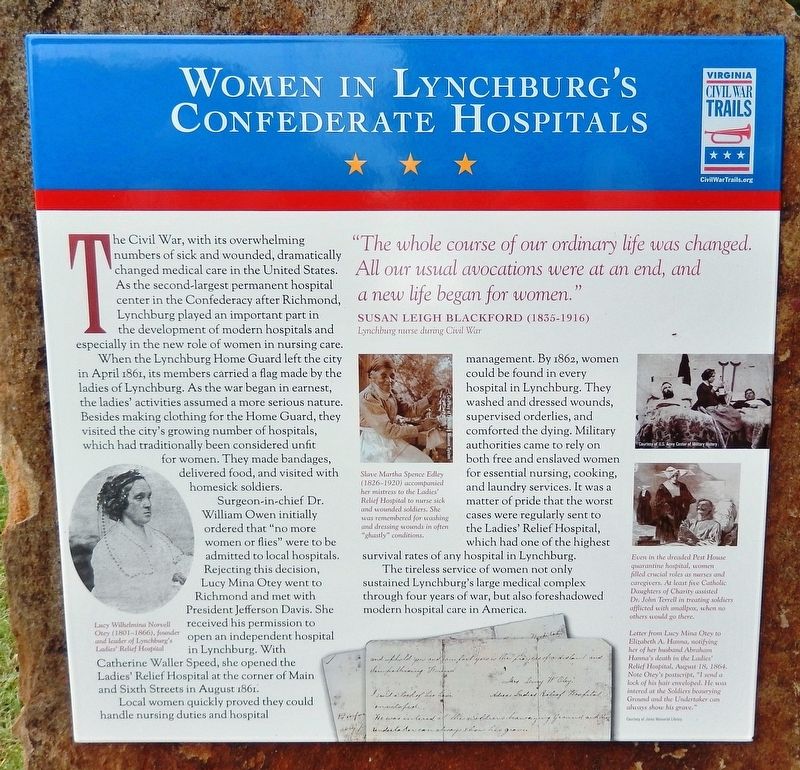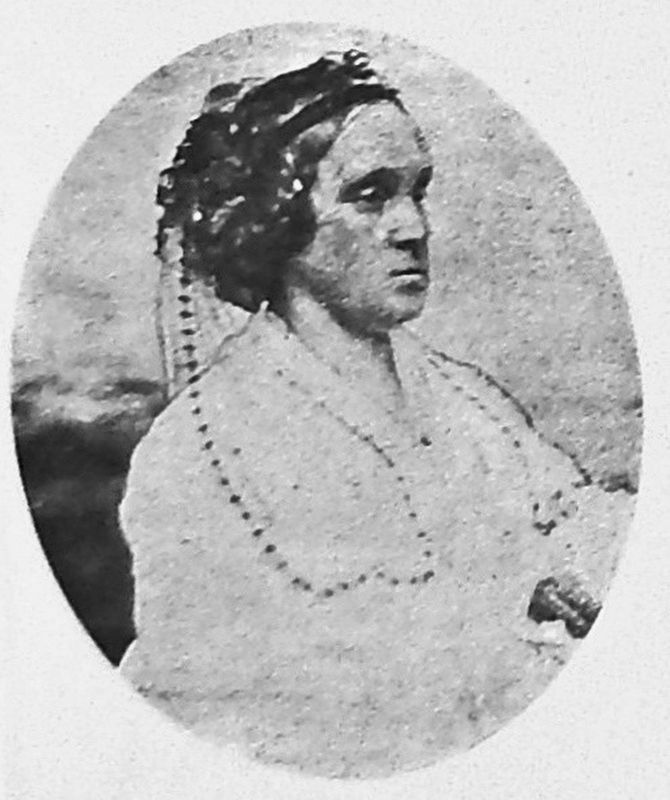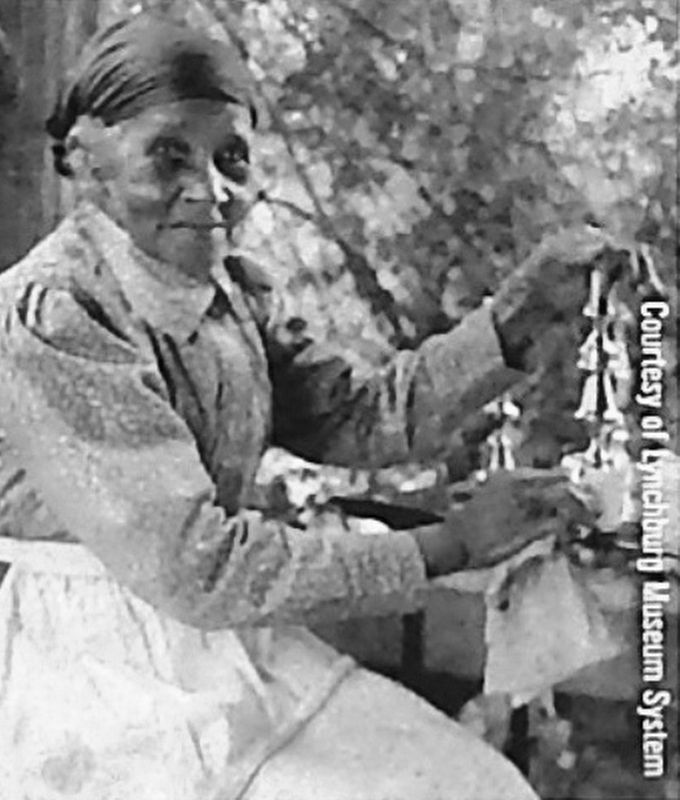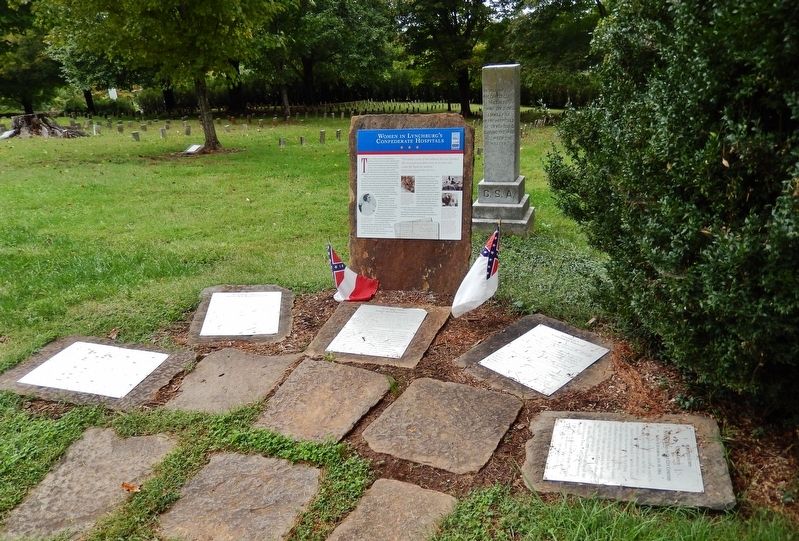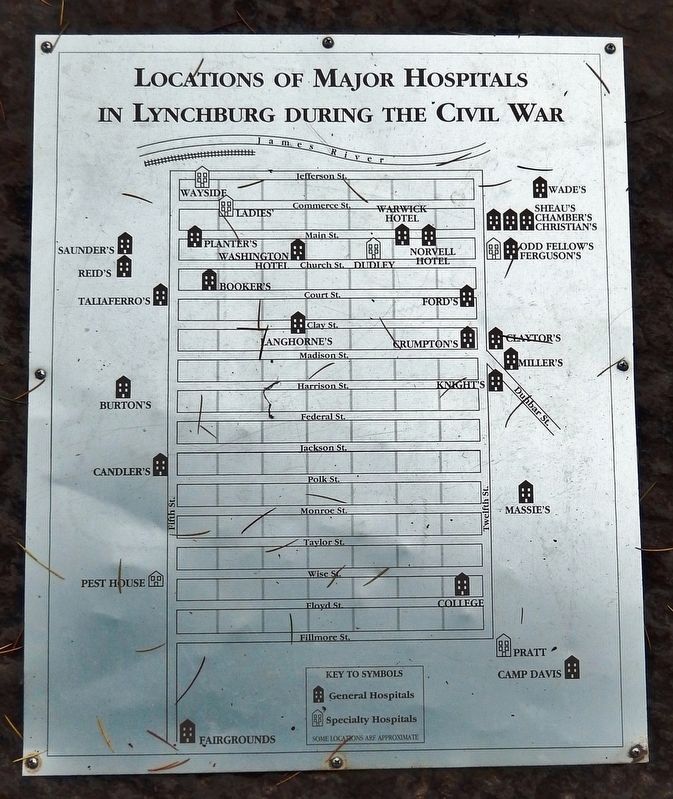Tinbridge Hill in Lynchburg, Virginia — The American South (Mid-Atlantic)
Women of Lynchburg's Confederate Hospitals
Inscription.
”The whole course of our ordinary life was changed. All our usual avocations were at an end, and a new life began for women.”
—Susan Leigh Blackford (1835-1916)
Lynchburg nurse during Civil War
The Civil War, with its overwhelming numbers of sick and wounded, dramatically changed medical care in the United States. As the second-largest permanent hospital center in the Confederacy after Richmond, Lynchburg played an important part in the development of modern hospitals and especially in the new role of women in nursing care.
When the Lynchburg Home Guard left the city in April 1861, its members carried a flag made by the ladies of Lynchburg. As the war began in earnest, the ladies' activities assumed a more serious nature. Besides making clothing for the Home Guard, they visited the city's growing number of hospitals, which had traditionally been considered unfit for women. They made bandages, delivered food, and visited with homesick soldiers.
Surgeon-in-chief Dr. William Owen initially ordered that "no more women or flies" were to be admitted to local hospitals. Rejecting this decision, Lucy Mina Otey went to Richmond and met with President Jefferson Davis. She received his permission to open an independent hospital in Lynchburg. With Catherine Waller Speed, she opened the Ladies' Relief Hospital at the corner of Main and Sixth Streets in August 1861.
Local women quickly proved they could handle nursing duties and hospital management. By 1862, women could be found in every hospital in Lynchburg. They washed and dressed wounds, supervised orderlies, and comforted the dying. Military authorities came to rely on both free and enslaved women for essential nursing, cooking, and laundry services. It was a matter of pride that the worst cases were regularly sent to the Ladies' Relief Hospital, which had one of the highest survival rates of any hospital in Lynchburg.
The tireless service of women not only sustained Lynchburg's large medical complex through four years of war, but also foreshadowed modern hospital care in America.
(photo caption)
Letter from Lucy Mina Otey to Elizabeth A. Hanna, notifying her of her husband Abraham Hanna's death in the Ladies' Relief Hospital, August 18, 1864. Note Otey's postscript, "I send a lock of his hair enveloped. He was intered at the Soldiers beaurying Ground and the Undertaker can always show his grave.”
Erected by Virginia Civil War Trails.
Topics and series. This historical marker is listed in these topic lists: Charity & Public Work • Science & Medicine
• War, US Civil • Women. In addition, it is included in the Virginia Civil War Trails series list. A significant historical month for this entry is August 1861.
Location. 37° 24.932′ N, 79° 9.421′ W. Marker is in Lynchburg, Virginia. It is in Tinbridge Hill. Marker can be reached from the intersection of Taylor Street and 4th Street when traveling north. Marker is located within the Old City Cemetery grounds, about 1/10 mile north of 4th Street. Touch for map. Marker is at or near this postal address: 401 Taylor Street, Lynchburg VA 24501, United States of America. Touch for directions.
Other nearby markers. At least 8 other markers are within walking distance of this marker. Confederate Smallpox Memorial (here, next to this marker); Lucy Mina Otey and the Ladie’s Relief Hospital (here, next to this marker); The Confederate Section (here, next to this marker); Lynchburg, Virginia (here, next to this marker); The Confederate Memorial Arch (a few steps from this marker); Removal of Federal Dead (a few steps from this marker); Crippled Corps and V.M.I. Cadets Form Inner Defenses in Old City Cemetery (a few steps from this marker); Lynchburg’s Confederate Surgeons (a few steps from this marker). Touch for a list and map of all markers in Lynchburg.
Also see . . .
1. Lynchburg served as site of many Civil War hospitals. Throughout the Civil War, tens of thousands of soldiers descended on Lynchburg, not to fight, but to heal. As a major industrial center and tobacco producer, the city had a number of large tobacco warehouses that, when emptied, made great hospital wards. More than 30 buildings were converted for medical uses during the war, including 18 warehouses that could hold several hundred patients. (Submitted on September 21, 2020, by Cosmos Mariner of Cape Canaveral, Florida.)
2. Confederate Hospitals in Lynchburg, Virginia. The Union “City Hotel” became known as the Ladies’ Relief Hospital. Five hundred women formed the Ladies’ Relief Society, similar to our American Red Cross today. These untrained women were married to wealthy entrepreneurs but they willingly learned medical techniques of putting on tourniquets, cleaning lacerations and ministering to the terminally ill. (Submitted on September 21, 2020, by Cosmos Mariner of Cape Canaveral, Florida.)
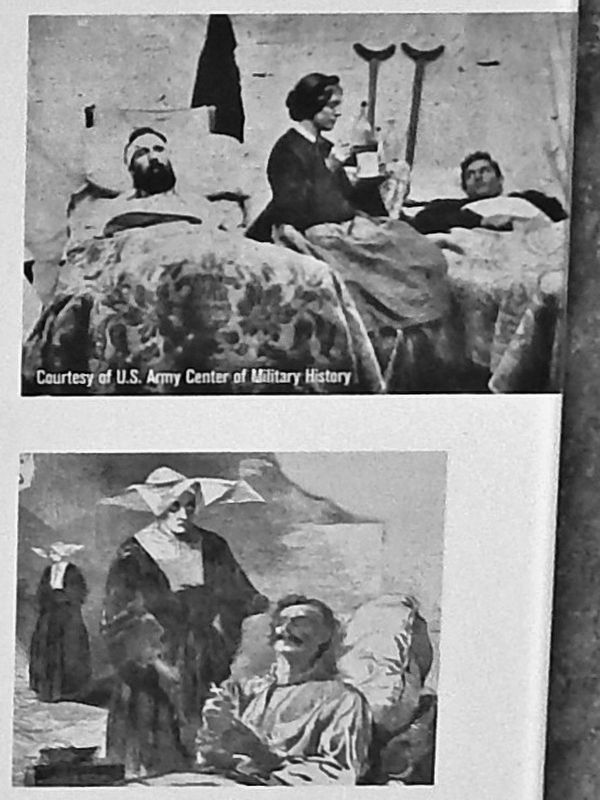
Courtesy of U.S. Army Center of Military History
4. Marker detail: Pest House Hospital
Even in the dreaded Pest House quarantine hospital, women filled crucial roles us nurses and caregivers. At least five Catholic Daughters of Charity assisted Dr. John Terrell in treating soldiers afflicted with smallpox, when no others would go there.
Credits. This page was last revised on February 1, 2023. It was originally submitted on September 21, 2020, by Cosmos Mariner of Cape Canaveral, Florida. This page has been viewed 357 times since then and 64 times this year. Photos: 1, 2, 3, 4, 5, 6. submitted on September 21, 2020, by Cosmos Mariner of Cape Canaveral, Florida.
